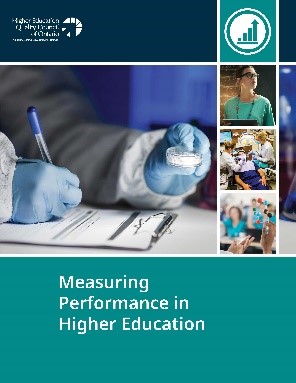Are public colleges and universities meeting the needs of their students, and how can they improve?
The performance of postsecondary institutions has traditionally been measured by examining factors such as enrolment rates and number of faculty. But these measures provide little information about how institutions are performing and how well they are serving their students. Measuring the performance of institutions can help drive improvement in the postsecondary system.
The assessment of postsecondary institutions should be tied to government policies and objectives, focused on outcomes and based on the best available data.
Key findings from HEQCO research on measuring performance in higher education:
- Traditional measures of institutional performance have been based on input measures, which say little about how students and institutions are performing.
- Performance measures should be based on outcomes, and linked to government’s priorities and goals.
- HEQCO has identified three overarching objectives for an outcomes-based performance-measurement system: educational quality, equity of opportunity and financial sustainability.
- HEQCO has identified seven outcomes-based metrics to measure students’ skills, graduate outcomes, economic and social mobility, students’ transfer patterns and graduation rates, and the financial sustainability of institutions.


